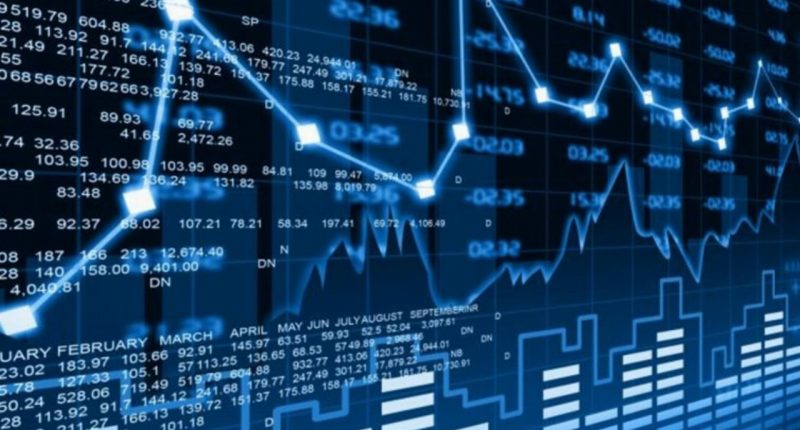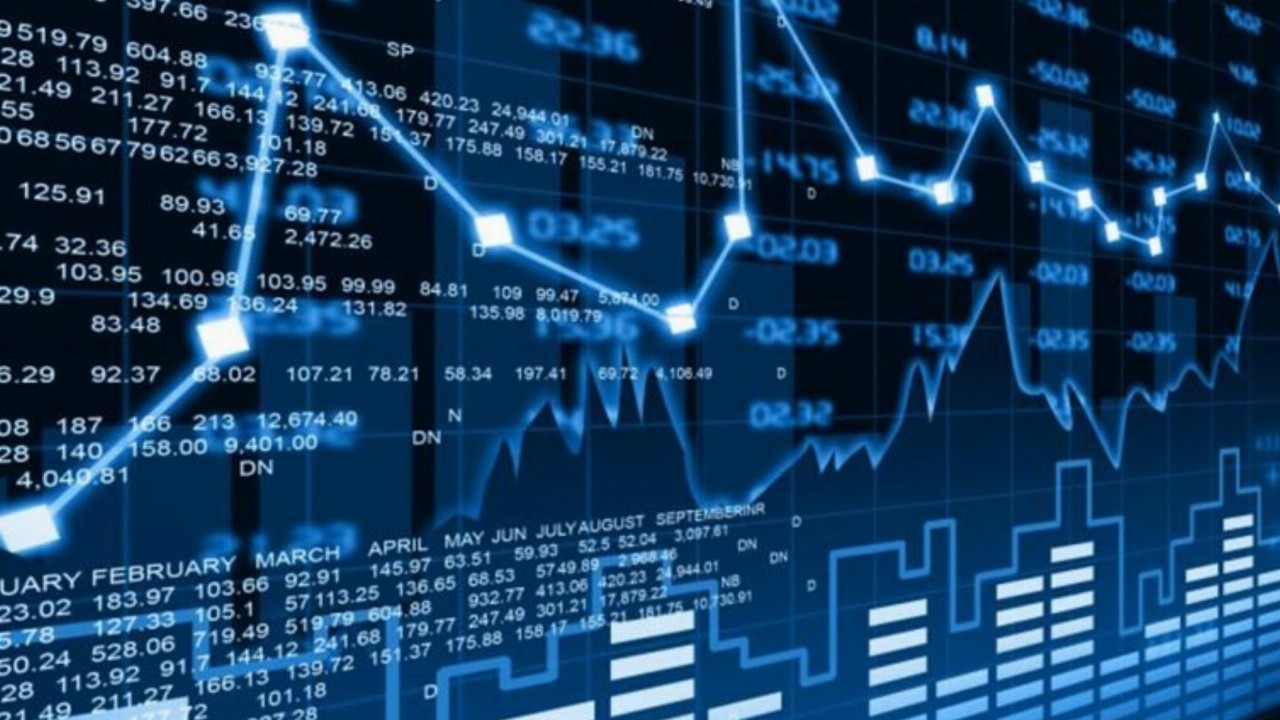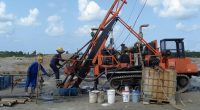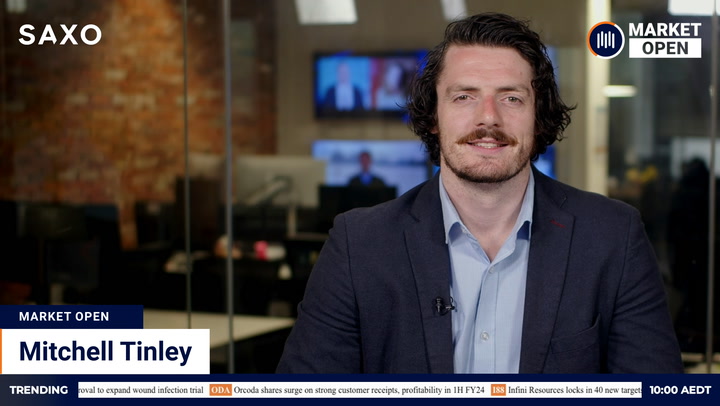Aussie shares were set to open sharply higher despite another volatile fade session on Wall Street as robust economic growth data underlined the case for higher rates.
ASX futures surged 101 points or 1.5 per cent, signalling early relief for investors after the S&P/ASX 200 yesterday slumped into a technical correction.
Iron ore rose to a new four-month high. Crude oil, gold and copper declined. The dollar fell more than 1 per cent.
Wall Street
Early gains once again gave way to afternoon selling as a week of reversals continued. The tremors from yesterday’s seismic Federal Reserve meeting kept investors on edge as they weighed mixed corporate earnings and stronger-than-expected fourth-quarter economic growth.
The Nasdaq Composite led the reversal, falling 189 points or 1.4 per cent. The S&P 500 slipped 23 points or 0.54 per cent closer to correction territory. The Dow Jones Industrial Average reversed from a 600-point gain to a slender loss of seven points or 0.02 per cent.
The market kicked higher at the open following data showing the economy gained momentum at the end of last year. Gross domestic product grew 6.9 per cent in the fourth quarter, well ahead of expectations. The consensus among economists polled by Dow Jones was for an increase of 5.5 per cent.
The annual growth rate of 5.7 per cent was the strongest since 1984. The annual rate was more than twice the average pre-pandemic growth rate of around 2.3 per cent.
“The Q4 GDP report was a nice upside surprise in a string of recently underwhelming economic data points,” Mike Reynolds, vice president of investment strategy at Glenmede, said.
The report added to evidence the US economy can bear higher rates and the withdrawal of pandemic emergency support measures. Futures pricing showed the odds on five rate increases this year climbed to 33 per cent from 22 per cent after Federal Reserve Chair Jerome Powell yesterday refused to rule out raising at each meeting this year.
Tesla and Intel were among the biggest drags as investors thumbed down earnings updates. Tesla sank 11.55 per cent after warning of continuing supply-chain issues. Intel dropped 7.04 per cent as forward guidance disappointed. Netflix bounced 7.51 per cent after billionaire Bill Ackman bought 3.1 million shares.
US natural gas futures soared 72 per cent before settling 46.5 per cent higher, the biggest gain on record. Market speculation attributed the extreme rally to a short squeeze on expiration day for the February contract.
“This is why it’s so dangerous to be short natural gas in the winter,” Phil Flynn, senior market analyst at The Price Futures Group, said. “It’s especially dangerous to be short at a time when the expiration is right around the corner.”
Australian outlook
A robust futures reading suggests strong early gains for the S&P/ASX 200. A sharp decline in the dollar favours Australia’s export-driven economy, as well as making share prices more compelling for holders of other currencies. The dollar slumped 1.27 per cent to 70.31 US cents. Overseas gains in BHP and Rio Tinto also support early strength.
Whether the market sustains those gains remains to be seen. The evidence this week is not convincing. An 81-point opening rally yesterday gave way to another brutal sell-off. The index fell 123 points or 1.77 per cent in afternoon trade to its lowest close since early April.
The Australian benchmark also entered a technical correction yesterday, defined as a close more than 10 per cent below a recent peak. Global markets are in a clear short-term downtrend and have yet to find a bottom. While the scale of declines on Wall Street have diminished in recent sessions, the market has not yet put in a convincing reversal.
The night’s best performers in the US were mostly traditional defensives as US treasury yields eased. The utilities sector gained 0.78 per cent, consumer staples 0.58 per cent and health 0.14 per cent.
Commodity producers also advanced. The energy sector put on 1.24 per cent and materials 0.36 per cent.
The financial sector eased 0.92 per cent as borrowing costs retreated. Growth stocks also struggled. Tech shed 0.69 per cent and consumer discretionary 2.27 per cent.
Back home, quarterlies are due today from Newcrest and a host of mining juniors.
On the economic calendar, quarterly producer inflation data are due at 11.30 am AEDT.
IPOs: two listings today. Firebrick Pharma at 12.30 pm AEDT has developed an experimental nasal spray for treating and preventing the common cold. The treatment has not yet been approved for sale. Belararox at 1.30 pm is an explorer targetting zinc, copper, gold, silver and nickel with projects in WA and NSW.
Commodities
Iron ore tested fresh four-month highs as buyers bet on improved Chinese demand and possible supply disruptions as Western Australia battles an Omicron outbreak. Western Australia had 131 active cases yesterday.
“We now have an outbreak and we’re not going to be able to get it under control,” WA Premier Mark McGowan said this week.
Rio Tinto and Fortescue Metals this week flagged labour shortages as potential drags on production in the year ahead. The spot price for ore landed in China firmed 65 US cents or 0.5 per cent to US$138.75 a tonne. Prices have bounced more than 50 per cent since November.
BHP‘s US-listed stock gained 2.06 per cent after its UK-listed stock added 1.88 per cent. Rio Tinto firmed 1.39 per cent in the US and 2.48 per cent in the UK.
Oil retreated as traders took profits ahead of next week’s OPEC+ meeting. Brent crude settled 0.7 per cent lower at US$89.34 a barrel.
A surge in the US dollar sapped demand for gold and other alternative stores of wealth. The US dollar index jumped 1.35 per cent after last night’s bumper GDP result.
Gold for February delivery settled US$36.60 or 2 per cent lower at US$1,793.10 an ounce. Today’s close was the lowest since January 6. The NYSE Arca Gold Bugs Index slid 2.79 per cent.
Base metals also felt the heat from the rising greenback. Dollar-priced commodities become more expensive for holders of other currencies when the dollar advances.
“The hawkish tone that Powell provided yesterday has taken the edge off commodity performance including in base metals,” WisdomTree commodity strategist Nitesh Shah told Reuters. “Reduced liquidity means that what could be fuelling demand for these metals could wane.”
Copper fell 2 per cent in the US to US$4.424 a pound. On the London Metal Exchange, copper fell 1.2 per cent, nickel 11.1 per cent, tin 0.7 per cent and lead 0.3 per cent. Zinc gained 0.7 per cent and aluminium 0.3 per cent.









